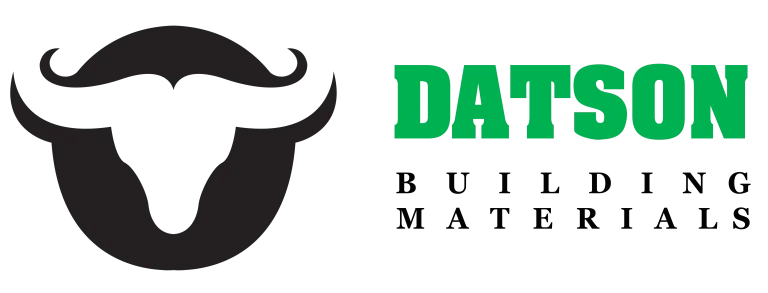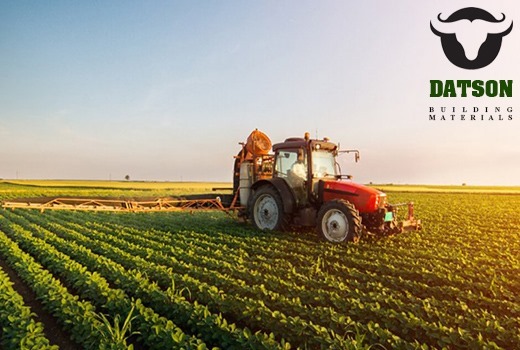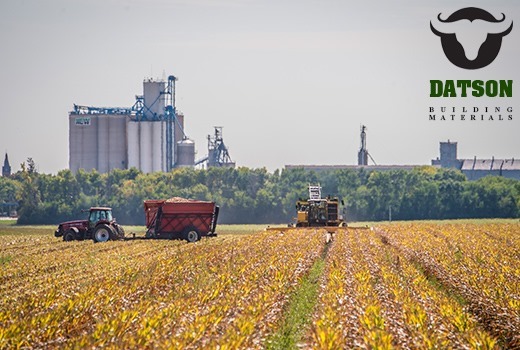When it comes to keeping cattle healthy and productive, nutrition plays a huge role. While most people focus on protein and energy, it’s often the little things like trace minerals that make a big difference. These tiny but essential nutrients support immune function, reproduction, and overall growth.
That’s why cattle mineral supplements are a staple on most farms. They help fill in the gaps that forages and feed can’t always cover. One of the minerals that often shows up in these supplements is iron, and a common source of that iron is something called Red Iron Oxide.
This article takes a closer look at how Natural Red Iron Oxide fits into trace mineral for cattle blends, how it compares to other iron sources, when it works well and when it might not. Whether you’re a farmer, a nutritionist, or just someone who wants healthier cattle, understanding your mineral mix matters.
Importance of Trace Mineral Supplements in Cattle Nutrition
Cattle need more than just calories to thrive. They rely on a mix of trace minerals cattle require in small amounts like zinc, copper, selenium, and iron to keep their systems running smoothly. These nutrients help everything from immune strength to fertility and weight gain.
The problem? Even the best pastures and feed programs often fall short on these trace minerals. That’s why cattle mineral supplements are so important. They’re specifically designed to ensure animals get the complete nutrition they need. It’s not just about preventing deficiencies; it’s about unlocking the full potential of your herd.
Overview of Iron’s Role in Bovine Health
Iron is best known for its job in helping red blood cells carry oxygen through the body. But its role in cattle health goes beyond that. In calves, iron supports healthy growth and immune development. In adult cattle, it helps maintain stamina, reproductive success, and recovery from stress.
Most adult cattle get enough iron from the environment, soil and water often contain plenty. But younger animals or those raised indoors might need some help, especially during their early growth stages. That’s where a smart approach to iron in Mineral Supplements for Beef Cattle becomes important.
Why Red Iron Oxide Is Used in Supplements
So why do we see Red Iron Oxide in so many mineral mixes? For starters, it’s affordable, stable, and easy to blend with other ingredients. It also gives mineral mixes that familiar reddish color, which helps with visual consistency and product quality control.
Companies like Datson often include it in their supplement lines not as the star of the show, but as a supporting ingredient. It’s a way to provide iron in a form that’s safe and easy to handle, especially when mixed with more absorbable types of iron in a well-rounded formula.
Red Iron Oxide in Cattle Supplements
Let’s break it down a little more. Natural Red Iron Oxide is made of ferric iron (Fe₂O₃), and while it does offer some iron content, it’s not very easily absorbed by the cow’s digestive system. That’s why it’s rarely used alone when the goal is to raise iron levels in cattle.
Instead, it’s typically part of a mix that includes more bioavailable forms of iron. Think of it as one ingredient in a larger recipe. It brings benefits like stability and coloring without contributing a large portion of the total absorbable iron.
Bioavailability and Comparison with Other Iron Sources
When choosing the best iron for cattle, one big factor is bioavailability, that is, how much of the iron can actually be absorbed and used by the animal. Some forms of iron are taken up quickly and efficiently. Others, like Red Iron Oxide, not so much.
Here’s a quick look at how it compares:
| Iron Source | Relative Bioavailability | Notes |
| Ferrous sulfate | High | Absorbs well; often used for treating deficiencies |
| Chelated iron | Very High | Excellent absorption; more expensive |
| Red Iron Oxide | Low | Stable and safe, but poorly absorbed |
| Iron proteinate | Moderate to High | Good balance between cost and absorption |
So while Red Iron Oxide is useful, it works best in combination with other forms of iron that cattle can actually use more easily.
Potential Negative Effects
Even with its benefits, there are times when Red Iron Oxide isn’t the best choice. For example, too much iron, especially from multiple sources can cause more harm than good. It can block the absorption of other important minerals like copper and zinc, leading to imbalances in your herd’s nutrition.
Another concern is that it can be misleading. Its strong red color might make a supplement look richer in iron than it really is. That’s why it’s important not to rely on Red Iron Oxide alone for meeting your herd’s iron needs, especially in young or at-risk animals.
Best Practices for Using Iron in Cattle Nutrition
To get the most out of your iron sources in cattle trace mineral, you need a balanced plan. That means knowing when Red Iron Oxide is a good fit and when to pass on it.
When to Include Red Iron Oxide
Red Iron Oxide makes sense in mineral mixes for adult cattle that already get some iron from their environment. It helps with product texture, uniformity, and shelf-life. It’s also great for giving your mineral mix a consistent look.
When to Avoid It
If you’re dealing with calves, young stock, or animals that have shown signs of iron deficiency, Red Iron Oxide shouldn’t be your go-to. These animals need iron sources that their bodies can use more quickly and efficiently. Also, skip it if your cattle are already exposed to high iron levels from water or soil, that’s a recipe for problems.
Conclusion & Recommendations
Iron is one of the most important but often misunderstood parts of cattle nutrition. While Red Iron Oxide isn’t the most absorbable form, it does have a place in well-designed cattle mineral supplements, especially when it’s used in balance with other, more bioavailable iron sources.
With the right mix, this stable, natural compound can help round out your cattle’s nutritional needs, improve product consistency, and support a long-term mineral strategy. Just don’t lean on it alone to fix a deficiency.
Whether you’re formulating your own feed or buying pre-made mixes, keep in mind that trace minerals cattle require like iron need to be thoughtfully balanced. That’s where working with a nutritionist really pays off.
At the end of the day, smart mineral feeding for healthy cows means more than just throwing minerals in a bucket. It’s about understanding what your animals need, and using the best tools and ingredients, including Red Iron Oxide, at the right time and in the right way.




